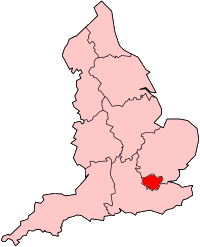| Kingston Power Station, London | |
|---|---|
 Kingston Power Station from the south-west in 1982 | |
 | |
| Country | England |
| Location | Greater London |
| Coordinates | 51°24′55″N0°18′22″W / 51.415400°N 0.306100°W |
| Status | Decommissioned |
| Commission date | 1893, 1948 |
| Decommission date | 1980 |
| Owner | As operator |
| Operators | British Electricity Authority (1948–1955) Central Electricity Authority (1955–1957) Central Electricity Generating Board (1958–1981) |
| Thermal power station | |
| Primary fuel | Coal |
| Chimneys | 2 (215 ft) |
| Cooling towers | None |
| Cooling source | River water |
| Power generation | |
| Units operational | 4 × 30 MW |
| Units decommissioned | All |
| Nameplate capacity | 117 MW |
| Annual net output | See text |
| External links | |
| Commons | Related media on Commons |
grid reference TQ17936989 | |
Kingston Power Station was a coal-fired generating station on the Thames in Kingston upon Thames, Surrey (later Greater London). It ceased generating in 1980 and was demolished in 1994.
